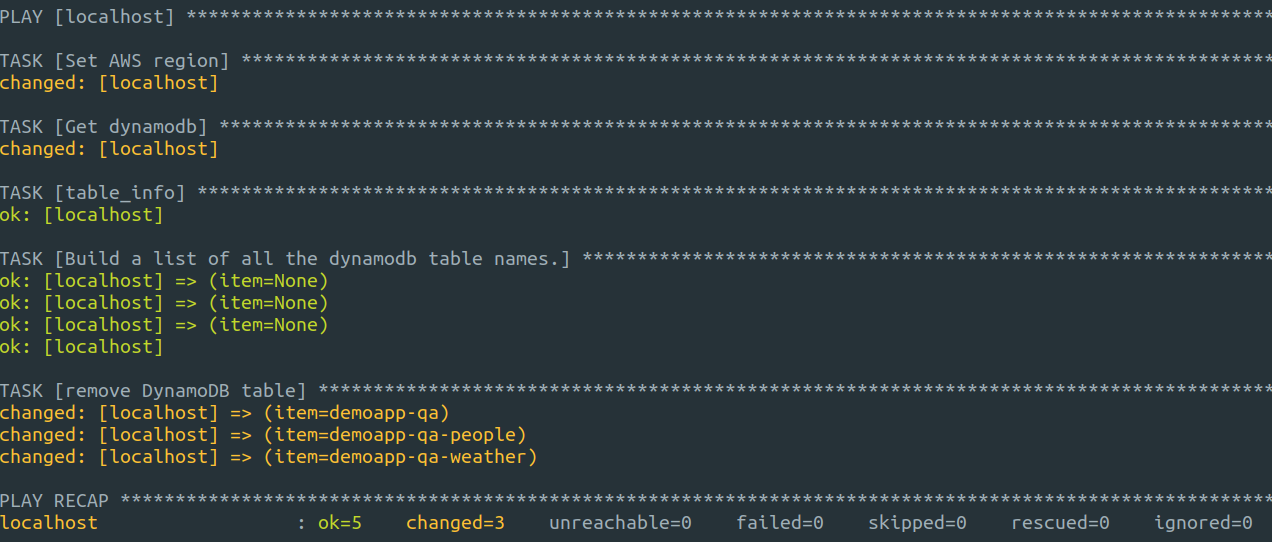

When the DynamoDB console appears, in the dashboard, click on the Create Table button to create a new DynamoDB table. While regular DynamoDB tables are replicated between multiple availability zones by default, this feature assures higher level of availability and durability by replicating our tables across regions.

In the top search bar, search for DynamoDB, and select it. Global Tables are multi-region, multi-master DynamoDB tables supporting fast local performance of globally distributed apps. Note: ensure to redact or obfuscate all confidential or identifying information (eg. delete the tables (make a backup) deploy delete the tables (no backup) retore the tables from the backup Note: The restore could last for hours. Using AWS Console, you can create a DynamoDB table easily.
#DELETE LOCAL DYNAMODB TABLE UPDATE#
name : Create dynamo table with hash and range primary key _table : name : my-table region : us-east-1 hash_key_name : id hash_key_type : STRING range_key_name : create_time range_key_type : NUMBER read_capacity : 2 write_capacity : 2 tags : tag_name : tag_value - name : Update capacity on existing dynamo table _table : name : my-table region : us-east-1 read_capacity : 10 write_capacity : 10 - name : Create pay-per-request table _table : name : my-table region : us-east-1 hash_key_name : id hash_key_type : STRING billing_mode : PAY_PER_REQUEST - name : set index on existing dynamo table _table : name : my-table region : us-east-1 indexes : - name : NamedIndex type : global_include hash_key_name : id range_key_name : create_time includes : - other_field - other_field2 read_capacity : 10 write_capacity : 10 - name : Delete dynamo table, articles and tools covering Amazon Web Services (AWS), including S3, EC2, SQS, RDS, DynamoDB, IAM, CloudFormation, Route 53, CloudFront, Lambda, VPC, Cloudwatch, Glacier and more. Controlling how Ansible behaves: precedence rules Local Secondary Indexes can only be created when you are creating the table, there is no way to add Local Secondary Index to an existing table, also once you create the index you cannot delete it.Collections in the Theforeman Namespace.Collections in the T_systems_mms Namespace.

#DELETE LOCAL DYNAMODB TABLE HOW TO#

This is the final lesson on Single-Item Actions. Collections in the Junipernetworks Namespace In this lesson, well learn about updating and deleting Items. It contains well written, well thought and well explained computer science and programming articles, quizzes and practice/competitive programming/company.Collections in the F5networks Namespace.Collections in the Containers Namespace.From the side navigation, go to DynamoDB -> Tables -> YourTable. Navigate to the dashboard for your DynamoDB table. DynamoDB export works with LocalStack as well as with a real AWS account. You can export the entire table or just a current page of data. Collections in the Cloudscale_ch Namespace Commandeer allows you to export your data out of your table in the csv or json format.Collections in the Chocolatey Namespace.This will take some time for AWS to configure automatic scaling and provision the DynamoDB table for you. After this, the next step is to check tables on the local server. Once this is done you can go ahead and create the table. In order to check the list of tables, you have to enter the following command in the liver server.' aws dynamodb list-tables 'As soon as you enter this command, you’ll see the list of all the tables available on the live server. Collections in the Check_point Namespace Put name in the Partition key (type string) Finally add an ID (type numeric) Boto3 DynamoDB query, scan, get, put, delete, update items.Virtualization and Containerization Guides.


 0 kommentar(er)
0 kommentar(er)
